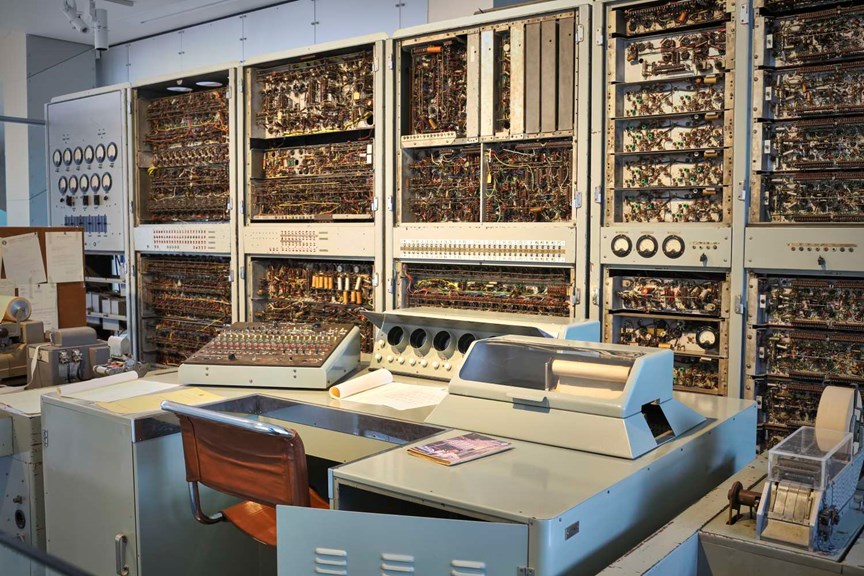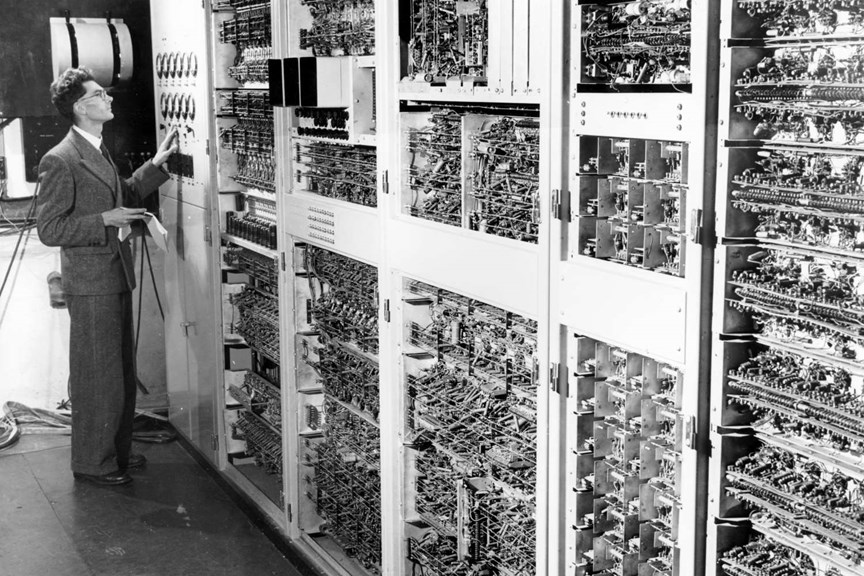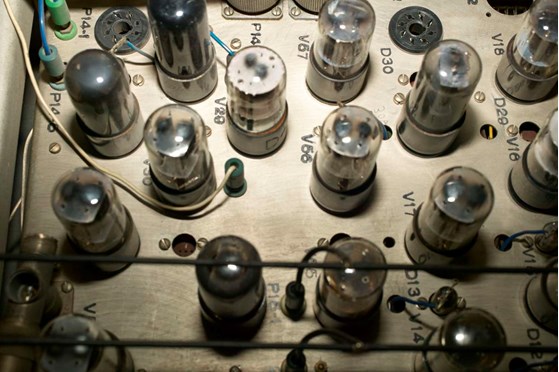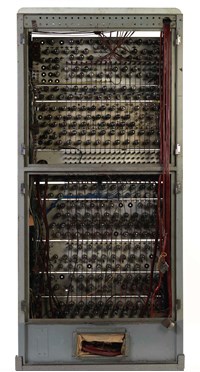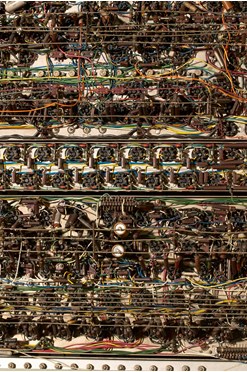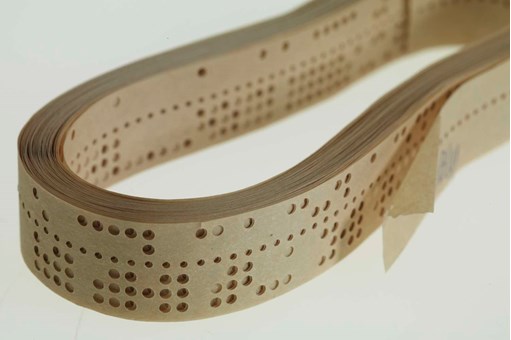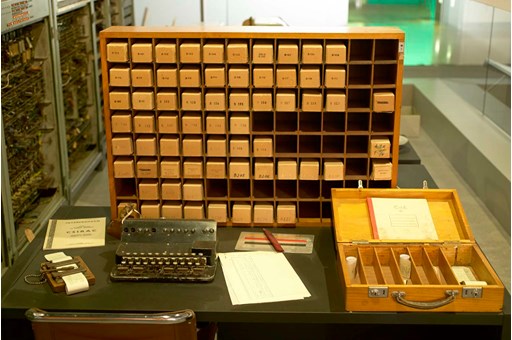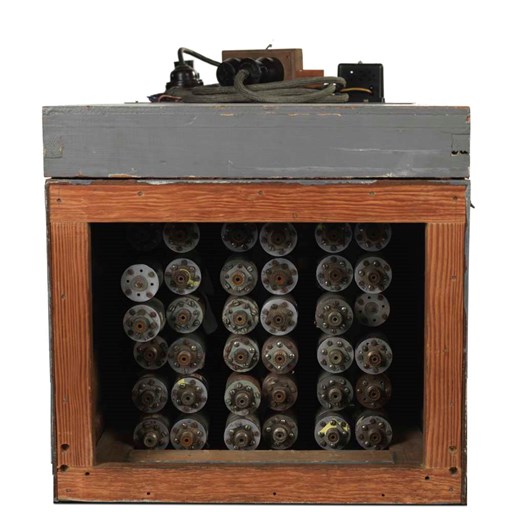CSIRAC - the world's oldest intact first-generation electronic computer
CSIRAC is on display in Think Ahead at Scienceworks. In this exhibition we contemplate the future, both the developments we can see just a few years ahead and those we can imagine and work towards.
This is a perfect spot to consider how human ingenuity has shaped our world through computing technology and to wonder what might come next …
Where it all started
In 1945 Trevor Pearcey, a young British Physicist, came to Australia to take up a job at CSIR Radiophysics in Sydney. In 1947 he teamed up with Maston Beard, an Australian electrical engineer, to design and build an electronic stored program computer CSR Mk 1 (later renamed CSIRAC). They ran the first program in November 1949.
CSIRAC’s name (pronounced ‘sigh-rack’) is derived from Commonwealth Scientific and Industrial Research Automatic Computer.
When it was built CSIRAC was at the cutting edge of the new field of computing. Parallel projects were happening in the UK and USA as the world was emerging from the secrecy of WWII when early computers were developed for military purposes.
Size matters
CSIRAC is so large because the electronic switches which it used to compute are vacuum tubes and CSIRAC has 2000 arranged in banks connected with a mass of wires.
The subsequent stage of computing used transistors as switches. Transistors were invented in 1947 and put the properties of semi-conductors to work as switches. They can be made much smaller than valves and connected together into integrated circuits. These circuits were used in computers from the mid-1960s and the trend of miniaturisation continued.
Today quantum research in Australia aims to develop computers that work at the sub-atomic level. By using the quantum state these computers will be able to perform several calculations simultaneously, allowing complex calculations to be performed in real-time.
Michelle Simmons, 2018 Australian of the Year, heads up research at the Centre of Excellence for Quantum Computation and Communication Technology at the University of New South Wales. In the following video, Michelle explains why the quest for quantum computers is so important:
Read more about Michelle Simmons and her work - Australia leading the global quantum race (australiaunlimited.com).
Hands-on computing pioneers
CSIRAC was a large and energy-hungry beast. It had a certain hum and smell when it ran. It didn’t work well on hot days. It required skilled minders to keep it running. When they suspected a faulty valve, the way to find it was to encourage it to fail completely by tapping on each valve in turn with a little rubber ‘valve donger’.
Programming was also very physical with the programs punched as holes into paper tape. There was a library of commonly used sub-programs that could be used but researchers had to figure out how to program the unique aspects of their research calculation in order to get the work done using CSIRAC.
Today we are seeing a resurgence of interest in hands-on computing. With the advent of the maker movement, people are once again enthusiastically building and programming their own computers. We are in a second age of do-it-yourself computing with people who are self-taught and creating things we couldn’t have previously imagined.
Another fascinating physical dimension of CSIRAC was the method of storing memory in the form of mercury delay lines. The results of the day’s calculations could be stored but only as long as the power was on! It was a novel form of memory brought across from developments in radar technology. Long tubes filled with mercury were not very safe or practical. Other methods such as magnetic drums were more commonly used. CSIRAC used both.
This highlights the pioneering nature of the work. Trevor Pearcey, Maston Beard and Geoff Hill had to invent ways of doing things. They had to plan out how they wanted it to function then build it from individual components. The protocols for how it would work, how information came in and was processed, and how the results came out were established by these pioneers and others working on similar projects such as ENIAC at the University of Pennsylvania, EDSAC at the University of Cambridge, and MADM at the Victoria University of Manchester. The fundamental architecture of computers was established at this time.
So why did CSIRAC survive while these other first generation computers did not?
As large experimental machines sometimes used for classified research, the early computers were often dismantled, reconfigured or disposed of at the end of their use.
CSIRAC’s life was extended by its time at the University of Melbourne where it was used for a broad range of purposes as well as being a teaching tool.
Unlike the other machines, CSIRAC had champions–people who had worked with CSIRAC or had a personal connection to it and had the foresight to ensure it was preserved. After running its last program in 1964 it was donated to the Institute of Applied Science (now Museums Victoria).
Subsequently the University of Melbourne CSIRAC History Research Team, led by Peter Thorne, advocated for its public display.
As Australian research in quantum computing is propelling us into a new era of computing power it is interesting to be reminded of just how far we have come in the years since CSIRAC was created.
You can find out more about the CSIRAC Collection on Museums Victoria's Collections website.
